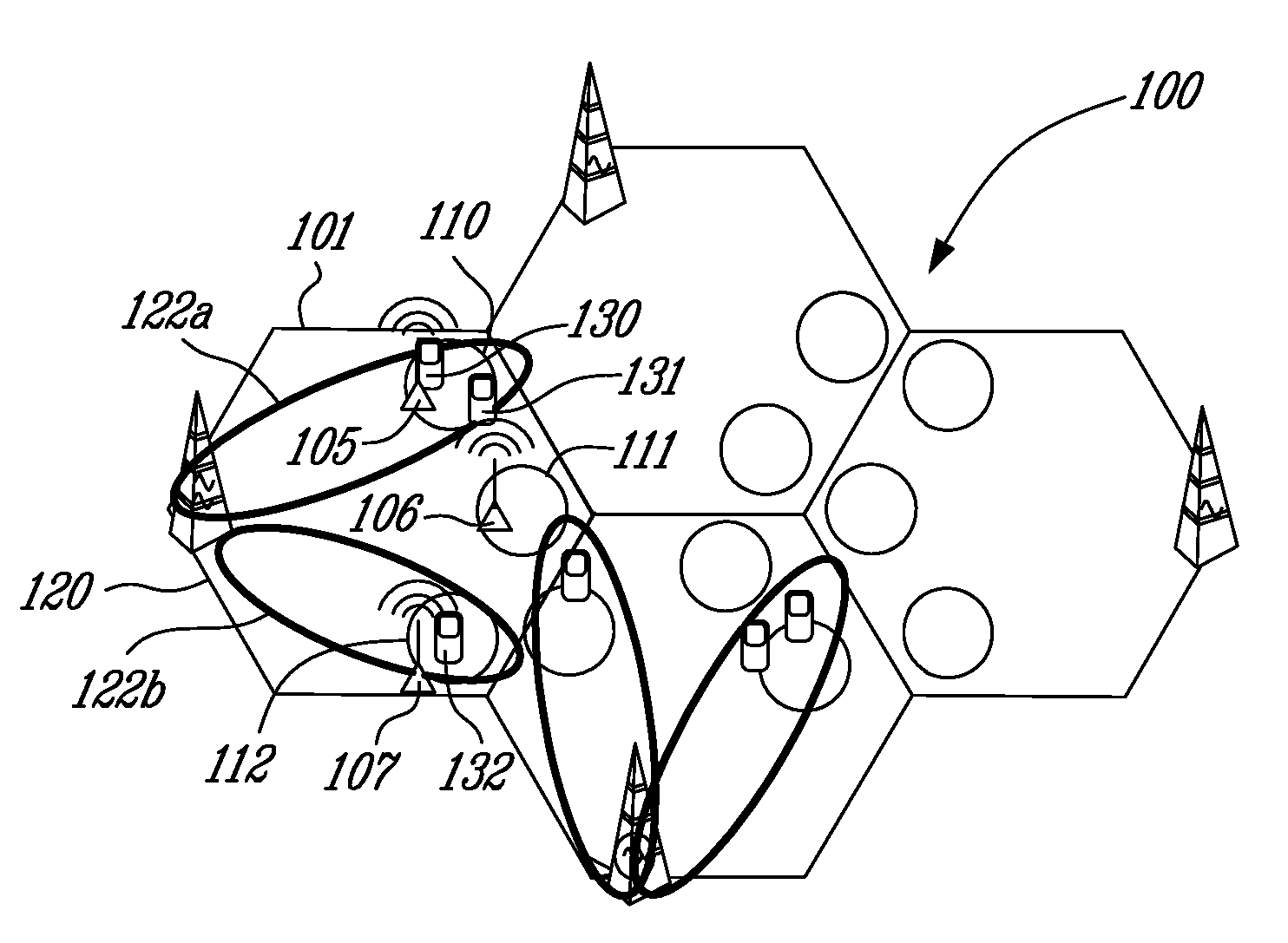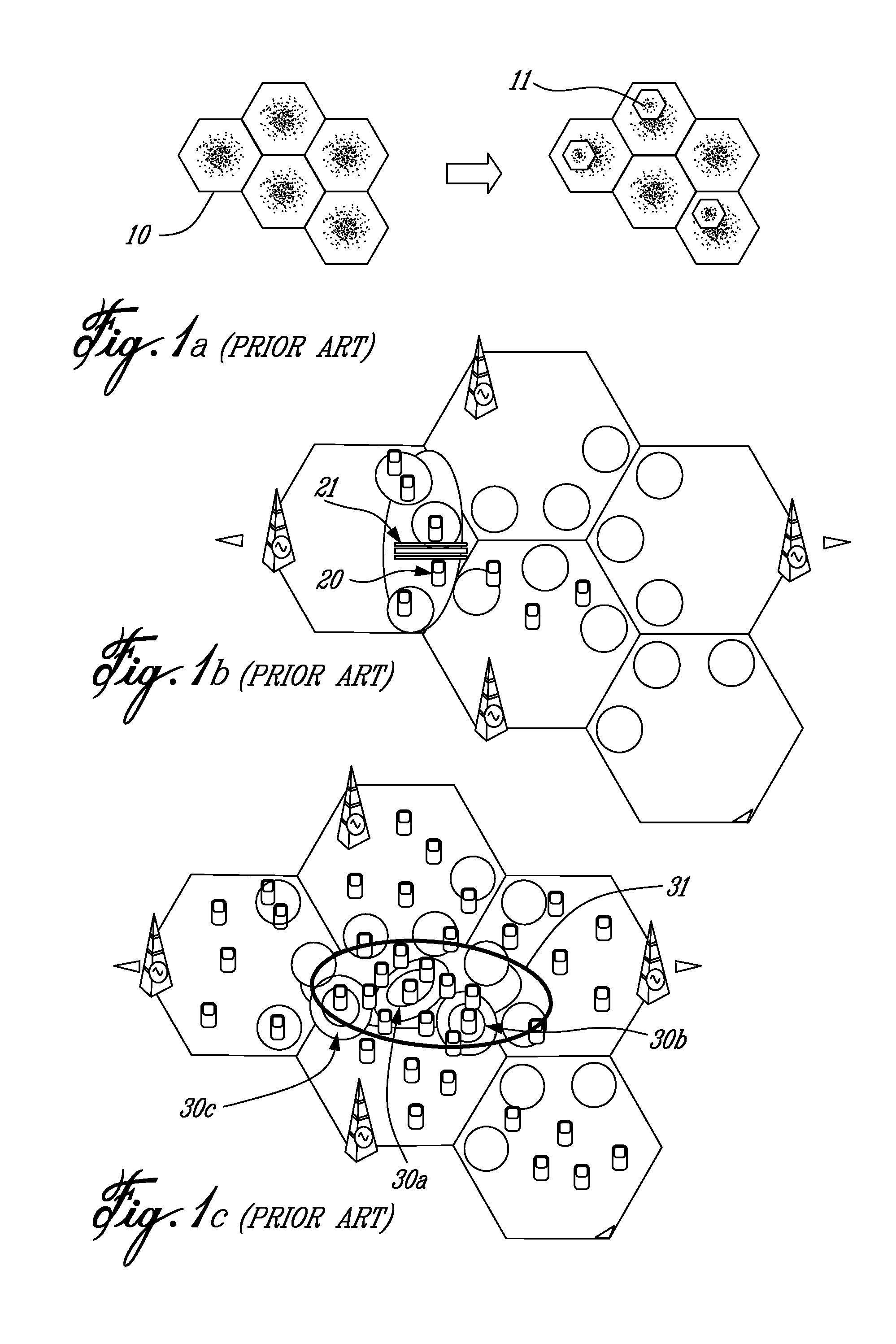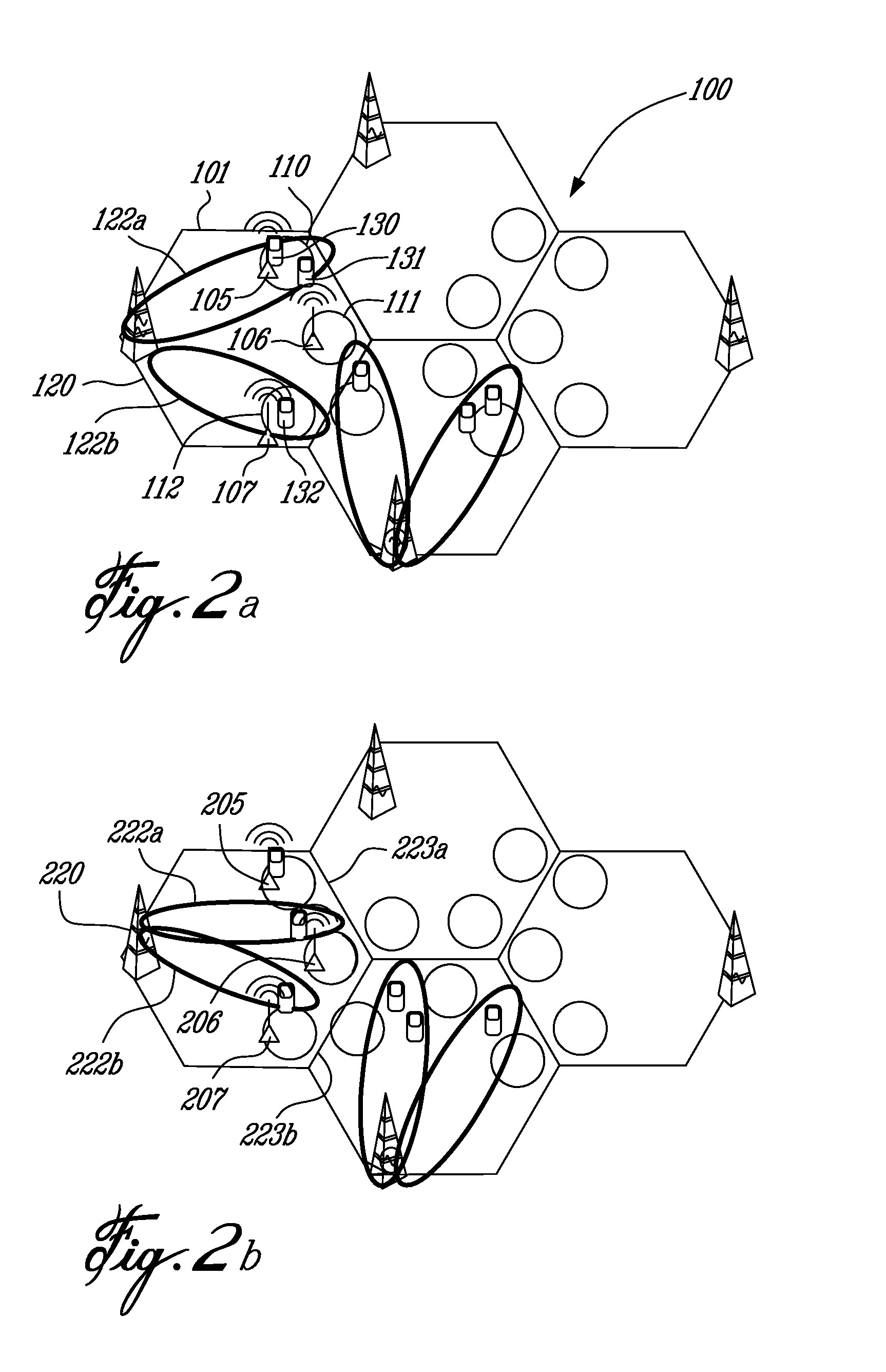Beamforming For Cell Edge Capacity Improvement in a Heterogeneous Network
- Summary
- Abstract
- Description
- Claims
- Application Information
AI Technical Summary
Benefits of technology
Problems solved by technology
Method used
Image
Examples
Embodiment Construction
[0026]In order to lighten the following description, the following acronyms will be used:[0027]BTS Base Transceiver Station[0028]COMP Coordinated Multi-Point[0029]FFR Fractional Frequency Reuse[0030]HetNet Heterogeneous Network[0031]LPN Low Power Node[0032]MIMO Multiple Input, Multiple Output[0033]OAM Operation and Maintenance[0034]PRS Positioning Reference Signal[0035]RSRP Reference Symbol Received Power
[0036]In the following description, for purposes of explanation and not limitation, specific details are set forth such as particular architectures, interfaces, techniques, etc. in order to provide a thorough understanding of the present invention. However, it will be apparent to those skilled in the art that the present invention may be practiced in other embodiments that depart from these specific details. That is, those skilled in the art will be able to devise various arrangements which, although not explicitly described or shown herein, embody the principles of the invention an...
PUM
 Login to View More
Login to View More Abstract
Description
Claims
Application Information
 Login to View More
Login to View More - R&D
- Intellectual Property
- Life Sciences
- Materials
- Tech Scout
- Unparalleled Data Quality
- Higher Quality Content
- 60% Fewer Hallucinations
Browse by: Latest US Patents, China's latest patents, Technical Efficacy Thesaurus, Application Domain, Technology Topic, Popular Technical Reports.
© 2025 PatSnap. All rights reserved.Legal|Privacy policy|Modern Slavery Act Transparency Statement|Sitemap|About US| Contact US: help@patsnap.com



